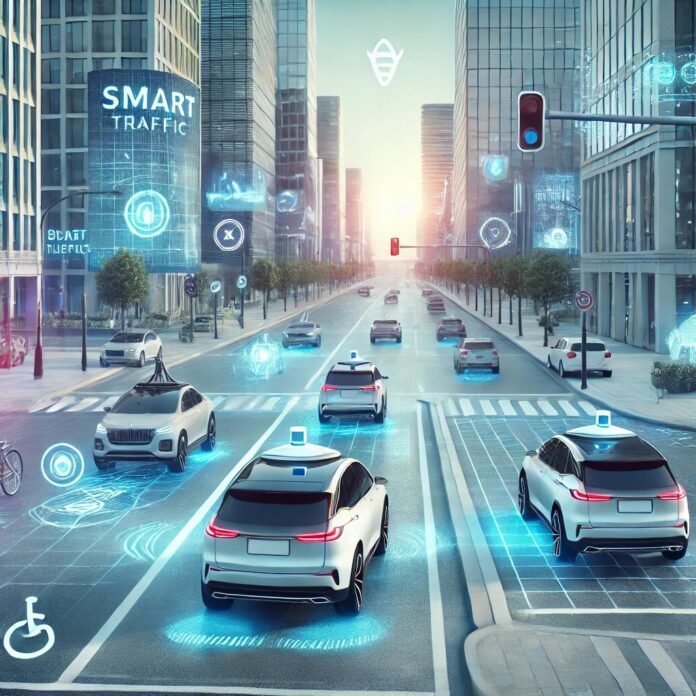Introduction
Autonomous vehicles, also known as self-driving cars, are poised to revolutionize the way we think about transportation. These innovative machines utilize advanced technologies such as artificial intelligence, sensors, and machine learning to navigate without human intervention. As the automotive industry races towards a future where autonomous, it is crucial to understand the implications, benefits, and challenges of this groundbreaking technology.
What Are Autonomous Vehicles?
they are cars or trucks equipped with the technology to drive themselves. These vehicles rely on a combination of sensors, cameras, radar, and artificial intelligence to perceive their surroundings and make real-time decisions. There are different levels of autonomy, ranging from driver assistance systems to fully autonomous vehicles that require no human input.
The Technology Behind Autonomous Vehicles
they are powered by a sophisticated array of technologies that work together to enable self-driving capabilities. Key components include:
- Sensors and Cameras: These devices capture real-time data about the vehicle’s environment, including obstacles, road conditions, and traffic signals.
- Artificial Intelligence (AI): AI algorithms process the data collected by sensors and cameras, allowing the vehicle to make informed decisions.
- Machine Learning: Machine learning enables the vehicle to improve its learning from past experiences and adapting to new situations.
- Radar and Lidar: These systems use radio waves and light pulses to detect, ensuring precise navigation and collision avoidance.
Benefits of Autonomous Vehicles
The adoption of vehicles promises numerous benefits that could transform transportation and society. Some of the most significant advantages include:
- Enhanced Safety: they have the potential to significantly reduce accidents caused by human error, such as distracted driving and fatigue. Advanced sensors and AI enable quicker reaction times and more accurate decision-making.
- Increased Efficiency: Self-driving cars can optimize routes and reduce traffic congestion, leading to shorter travel times and lower fuel consumption.
- Accessibility: vehicles can provide mobility solutions for individuals who are unable to drive, such as the elderly and disabled, improving their independence and quality of life.
- Environmental Impact: By optimizing driving patterns and reducing idling, vehicles can lower greenhouse gas emissions and contribute to a cleaner environment.
Challenges Facing Autonomous Vehicles

Despite the potential benefits, several challenges must be addressed before autonomous vehicles become mainstream. These include:
- Technological Limitations: Developing reliable and safe autonomous driving technology remains a complex challenge. Ensuring that vehicles can navigate safely in all conditions, including adverse weather and unpredictable traffic, is critical.
- Regulatory and Legal Issues: Establishing clear regulations and liability frameworks for vehicles is essential to their widespread adoption. Policymakers must address questions related to safety standards, insurance, and accountability in the event of accidents.
- Public Perception and Acceptance: Gaining public trust in autonomous vehicles is crucial. Educating the public about the safety and benefits of self-driving technology can help overcome skepticism and resistance.
- Cybersecurity: Autonomous vehicles are vulnerable to hacking and cyberattacks, which could compromise passenger safety and privacy. Robust cybersecurity measures are necessary to protect against potential threats.
The Future of Autonomous Vehicles
The future of autonomous vehicles looks promising, with ongoing advancements in technology and increasing investments from major automotive and tech companies. Some key trends to watch include:
- Collaboration Between Industries: Partnerships between automotive manufacturers, tech companies, and governments will be essential to accelerate the development and deployment of autonomous vehicles.
- Integration with Smart Cities: Autonomous vehicles will play a crucial role in the development of smart cities, where interconnected systems enhance urban mobility and reduce congestion.
- Expansion of Ride-Sharing Services: Companies like Uber and Lyft are exploring the integration of autonomous vehicles into their fleets, offering convenient and cost-effective transportation options.
- Continued Technological Innovation: Advances in AI, and sensor technology will drive the evolution of autonomous vehicles, making them safer, more efficient, and more reliable.
Conclusion
Autonomous vehicles represent a significant leap forward in transportation technology, with the potential to reshape how we travel and interact with our environment. While challenges remain, the benefits of enhanced safety, efficiency, accessibility, and environmental impact make autonomous vehicles a compelling vision for the future. As technology continues to evolve and societal acceptance grows, autonomous vehicles are set to become an integral part of our daily lives, transforming the way we move and connect with the world around us.



